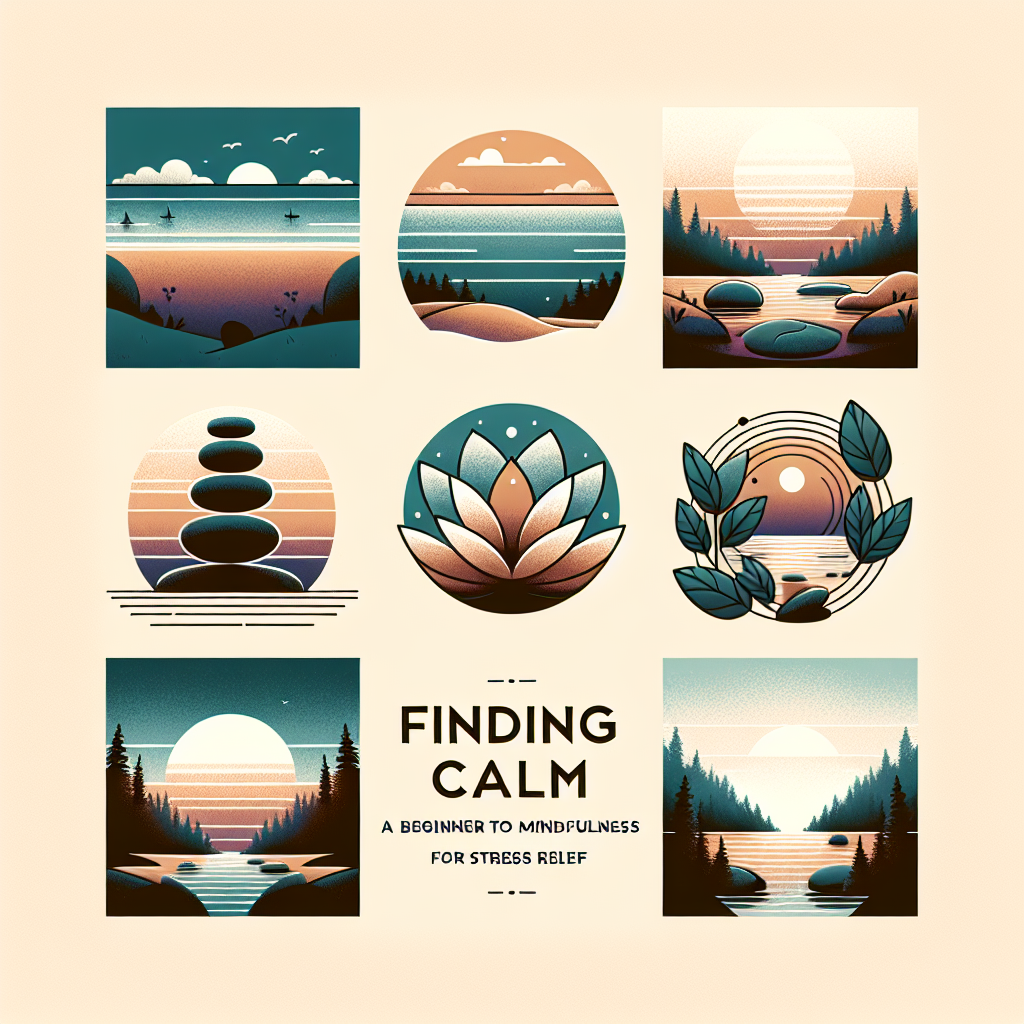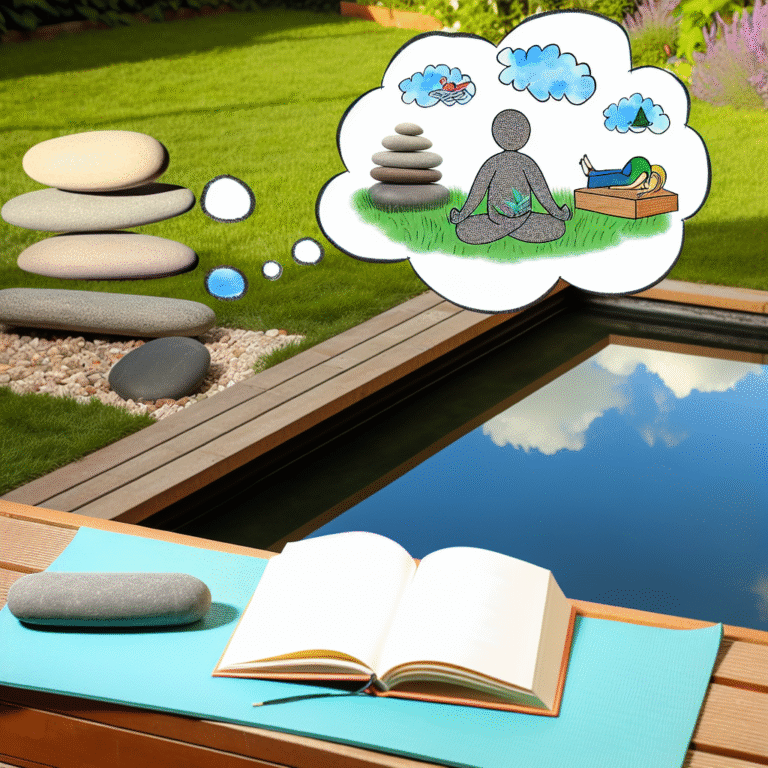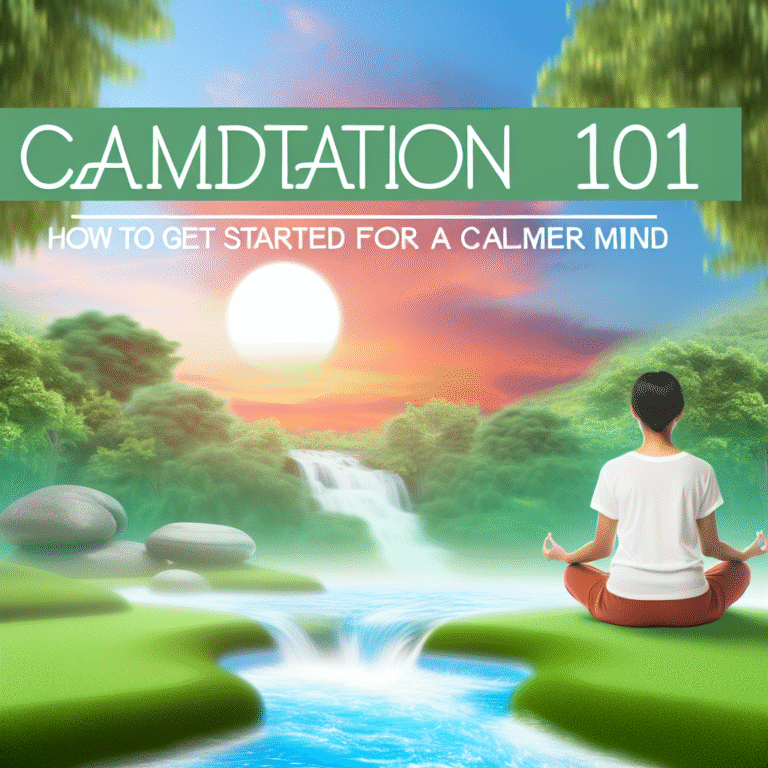
Finding Calm: The Essential Beginner’s Guide to Mindfulness for Stress Relief
Introduction
In our fast-paced world filled with constant demands and distractions, stress can feel almost inescapable. Whether it’s juggling multiple tasks at work, managing relationships, or navigating daily challenges, many of us are searching for effective ways to cope. Finding calm through mindfulness is not just a trend; it’s a powerful tool for stress relief that anyone can adopt. This guide will delve into the transformative practice of mindfulness, offering practical insights, actionable techniques, and inspiring case studies to help you on your journey towards a more peaceful and balanced life.
Understanding Mindfulness
What is Mindfulness?
At its core, mindfulness is the practice of becoming fully aware of the present moment without judgment. It encourages individuals to observe their thoughts and feelings without becoming overwhelmed by them, which can reduce stress and enhance overall well-being.
The Science Behind Mindfulness
Research supports the benefits of mindfulness for stress relief. Studies have shown that practicing mindfulness can decrease anxiety, enhance emotions, and even improve physical health. According to a study published in the journal JAMA Internal Medicine, mindfulness meditation can significantly improve anxiety, depression, and pain. Understanding these scientific backing helps reinforce the importance of incorporating mindfulness into your daily routine.
Real-World Application
Case Study: Sarah’s Journey
Sarah, a working mom of three, felt overwhelmed by her responsibilities. Balancing work and family left her feeling anxious and fatigued. After learning about mindfulness, she decided to try a guided meditation app. Within weeks, Sarah found that dedicating just 10 minutes a day to mindfulness helped her reclaim her mental clarity and emotional stability.
Getting Started with Mindfulness
Simple Mindfulness Techniques
Breathing Exercises: Focused breathing is an accessible way to start. Try the 4-7-8 technique:
- Inhale for 4 seconds
- Hold your breath for 7 seconds
- Exhale for 8 seconds
Body Scan: Lie down comfortably and mentally scan your body from head to toe. Acknowledge areas of tension without judgment.
- Mindful Walking: Take a slow walk, focusing on the sensation of your feet touching the ground.
Creating Your Mindfulness Space
Having a designated area for mindfulness practice can enhance your experience. Consider these tips for creating your personal oasis:
- Choose a Quiet Spot: Find a space free from distractions.
- Use Calming Colors: Soft blues or greens can create a tranquil atmosphere.
- Incorporate Soft Textures: Use cushions or blankets to make your area inviting.
Establishing a Routine
To make mindfulness a regular part of your life, consistency is key. Start small and set a time—perhaps first thing in the morning or before bed. Gradually increase your mindfulness duration as you become more comfortable.
The Benefits of Mindfulness for Stress Relief
Mental Health Benefits
Mindfulness can train your mind to respond to stress more effectively. Regular practice may lead to:
- Decreased Anxiety: Mindfulness helps in recognizing and managing anxiety responses.
- Enhanced Focus: It improves attention and concentration, making tasks feel less overwhelming.
- Emotional Regulation: Greater awareness of your feelings helps in processing them healthily.
Physical Health Benefits
Mindfulness isn’t just about mental clarity; it can also positively impact physical health:
- Lower Blood Pressure: Mindfulness reduces stress, leading to lower blood pressure.
- Improved Sleep Quality: Many find that mindfulness enhances their ability to relax and fall asleep more easily.
Case Study: John’s Transformation
John was an executive with high blood pressure associated with stress. After integrating mindfulness practices into his daily life, he noticed a significant decrease in his blood pressure readings. This holistic approach not only improved his physical health but also enhanced his work-life balance.
Exploring Different Mindfulness Practices
Guided Meditation
Utilize resources like apps or online videos to lead you through meditation sessions. This structure can help beginners develop confidence in their practice.
Mindfulness in Daily Activities
You can incorporate mindfulness into everyday activities:
- Mindful Eating: Savor each bite of your food, focusing on flavors and textures.
- Mindful Commuting: Use your commute as an opportunity to practice mindfulness through simple breathing or listening to calming music.
Group Mindfulness Practice
Consider joining a local class or online group. Sharing your journey with others can foster motivation and accountability.
Tracking Your Progress
Journaling
Maintain a mindfulness journal to reflect on your journey. Track feelings before and after practices, noting any changes in mood or stress levels.
Mindfulness Apps and Tools
Consider using technology to support your mindfulness journey. Apps like Headspace or Calm offer guided meditations, tracking tools, and reminders.
Assessing Your Growth
Evaluate your mindfulness practice periodically. Assess how your stress levels correlate with your mindfulness habits, providing insights into what works best for you.
Overcoming Challenges
Common Obstacles to Mindfulness
- Time Constraints: Find short snippets of time throughout the day to practice rather than relying solely on long sessions.
- Difficulty Concentrating: If your mind wanders, gently guide it back to your breath or mantra without self-judgment.
- Self-Criticism: Understand that mindfulness is a practice; it’s okay to have off days.
Strategies for Staying Motivated
- Set Realistic Goals: Aim for attainable mindfulness milestones, gradually building complexity.
- Celebrate Small Wins: Acknowledge progress, no matter how minor.
- Seek Social Support: Engage with friends or family about your mindfulness journey.
Conclusion
Finding calm in our hectic lives is a journey worth embarking upon. Through mindfulness, you can cultivate a deeper understanding of yourself and reduce stress dramatically. Implement the insights and techniques discussed in this guide, and take the first step towards a more mindful and peaceful existence. Remember, mindfulness is not about perfection—it’s about embracing the present moment and allowing yourself the grace to grow at your own pace.
FAQs
1. What is the best time to practice mindfulness?
Answer: The best time to practice mindfulness is whenever you can consistently dedicate time to it. Morning, midday breaks, or before bed are popular options.
2. Do I need special equipment for mindfulness practice?
Answer: No special equipment is needed. A quiet space and your willingness to engage are all you require to start your mindfulness journey.
3. Can mindfulness help with physical pain?
Answer: Yes, studies indicate that mindfulness can assist in managing chronic pain by altering how one perceives pain and promoting relaxation.
4. How long should I meditate for?
Answer: Beginners can start with just 5-10 minutes a day, gradually increasing as they become more comfortable.
5. Is mindfulness the same as meditation?
Answer: While mindfulness can be a form of meditation, it encompasses a broader range of practices and can be integrated into everyday life beyond formal meditation sessions.
By understanding and incorporating mindfulness into your routines, you can discover your path to serenity and ease stress. It’s time to embrace these practices and transform your life. Remember, finding calm through mindfulness is a journey, and every step matters.














